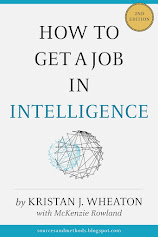I love having friends and alumni that send me interesting links and this week contained an extraordinary crop! Here are three of the best things that happened to cross my desktop:
 |
| Some of the Ushahidi Deployments |
Patrick Meier is the Director of Crisis Mapping at Ushahidi and previously co-directed Harvard's Program on Crisis Mapping and Early Warning (If you are not familiar with the crisis mapping platform Ushahidi, stop now and go here). He has had extensive real-world experience with social media sources in the hundreds of uses of the Ushahidi platform in crises world-wide and he has translated that experience into an outstanding list of hints and tips for evaluating social media (Twitter specifcially).
While his insights into evaluating social media are born of this experience rather than more rigorous statistical analyses (like Dax's), his findings ring true and certainly operate as an excellent general purpose checklist until the science catches up.
 |
| http://envisioningtech.com/ |
While I normally start with Gartner on these types of questions, I have just added Michael Zappa and his excellent work at Envisioning Technology to my short list of go-to sources.
The technology roadmap he has built is awesome (you can see the compact version to the right but I strongly recommend you take a look at the interactive version here (Note to Michael Zappa: If you are going to make it Creative Commons, you might as well make it embeddable as well...Please!)).
Ronald Reagan: Intelligence and the End of the Cold War. Finally, I like to emphasize the importance of production skills for my students with a variety of stories about high-level decisionmakers who preferred their intelligence in "alternative" formats.
For example, John F. Kennedy had the President's Intelligence Checklist (the PICL -- analysts who worked on the product were said to work in the "PICL Factory"). Ronald Reagan, on the other hand, liked to see some of his intelligence, at least, in the form of short videos.
(Note: One of the kinds of analytic report writing we teach at Mercyhurst is called, generically, the Short Form Analytic Report, usually pronounced "Ess-Far". When this type of report contains more visual elements than written ones, we call it a visual SFAR, hence the title to this post).Many have speculated that this was because Reagan was an actor and naturally gravitated to film but, whatever the reason, it is an interesting lesson in the importance of producing intelligence -- that is, the ability to fully communicate the results of analysis to the decisionmaker that the intel unit is supporting.
You can see the full report here or watch the videos on the CIA's YouTube channel (!). I have embedded my favorite (because I lived through it...) below:




